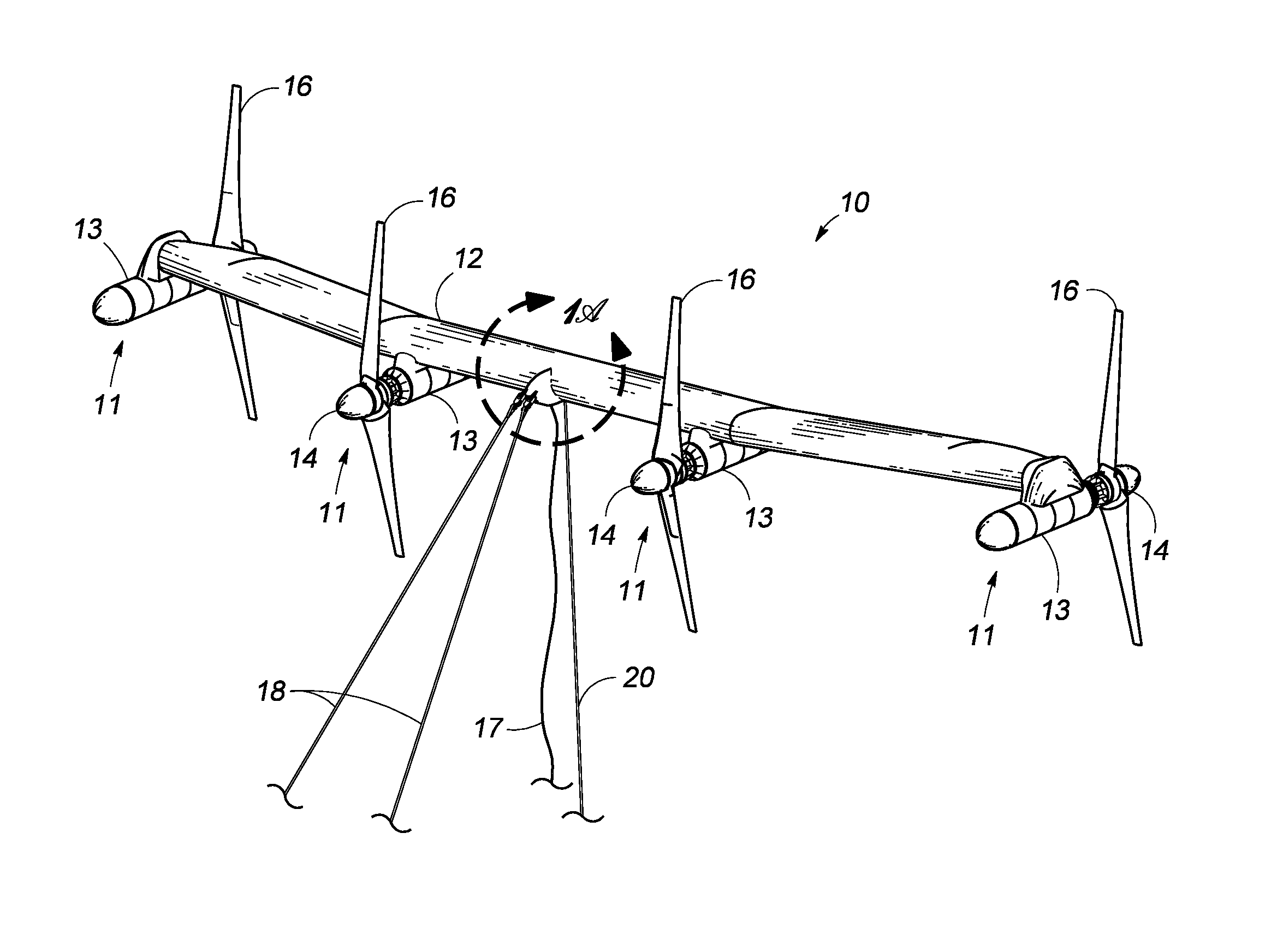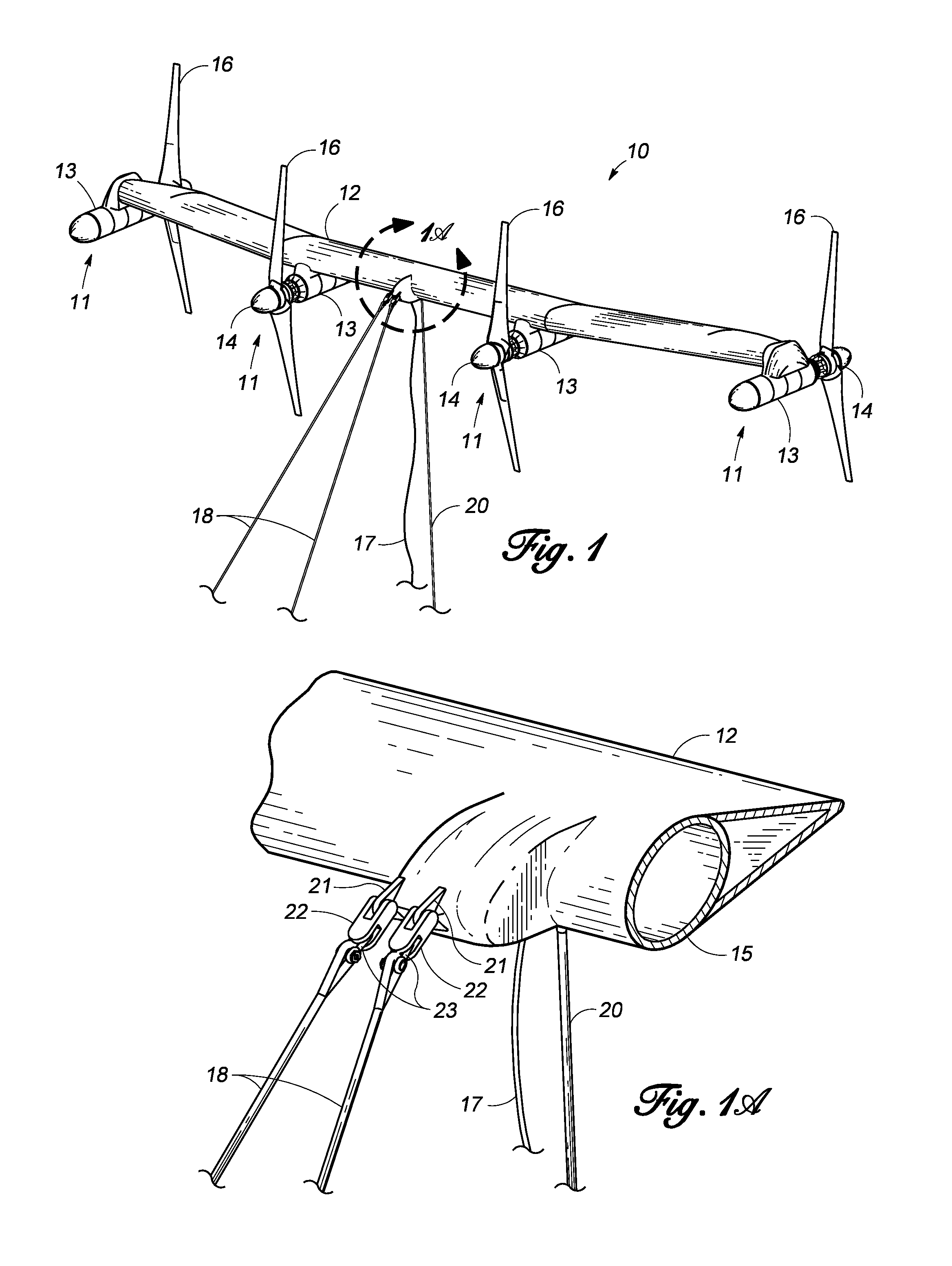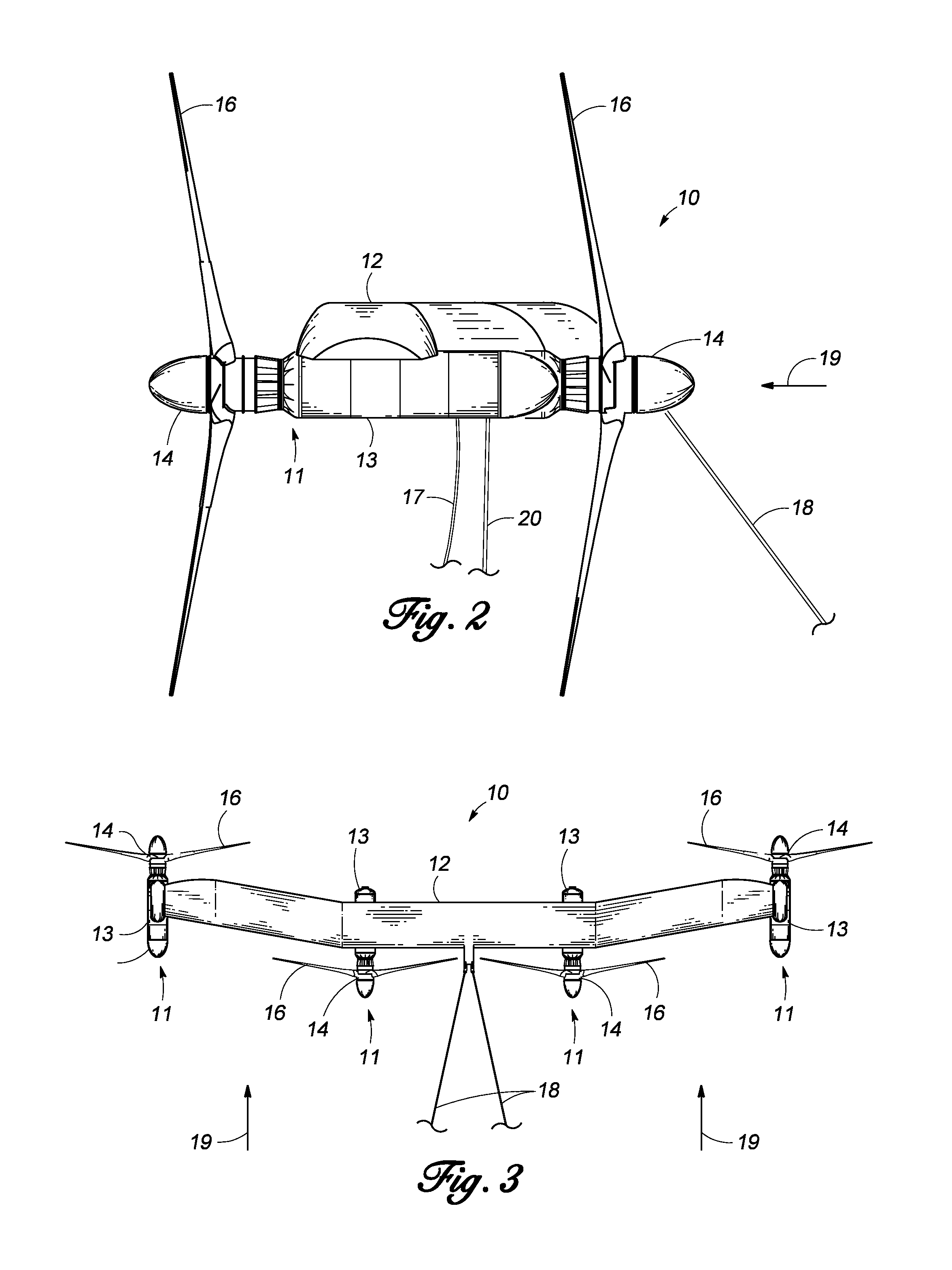Submerged electricity generation plane with marine current-driven rotors
a technology of current-driven rotors and electricity generation planes, which is applied in the direction of electric generator control, special-purpose vessels, vessel construction, etc., can solve the problems of maintenance of underwater systems, high underwater construction costs, and low power output, so as to reduce the effect of buoyancy, increase the drag load, and reduce the speed
- Summary
- Abstract
- Description
- Claims
- Application Information
AI Technical Summary
Benefits of technology
Problems solved by technology
Method used
Image
Examples
Embodiment Construction
[0087]The present invention described herein is intended for marine current underwater power generation with passive depth control.
[0088]FIGS. 1, 2 and 3 illustrate a submersible multi-megawatt power plant that will be referred to as the platform 10. These figures show the platform 10 in a perspective view, a side view, and plan view. This variation of the platform 10 has four power pods 11, each rigidly connected to the transverse structural wing 12. The wing 12 can be formed in a number of ways, depending on design choice, including a faired tube 15, as shown in FIG. 1A, or a truss 31, as shown in FIG. 7, infra. The power pod 11 is comprised of a dry, buoyant pressure vessel 13 (containing a bearing and seal assembly and drivetrain) and a wet rotor assembly 14 with two fixed pitch rotor blades 16. The power pods 11 and structural wing 12 contain all of the equipment necessary for generating and supplying electricity via a riser cable 17 to the electric power collection system for ...
PUM
 Login to View More
Login to View More Abstract
Description
Claims
Application Information
 Login to View More
Login to View More - R&D
- Intellectual Property
- Life Sciences
- Materials
- Tech Scout
- Unparalleled Data Quality
- Higher Quality Content
- 60% Fewer Hallucinations
Browse by: Latest US Patents, China's latest patents, Technical Efficacy Thesaurus, Application Domain, Technology Topic, Popular Technical Reports.
© 2025 PatSnap. All rights reserved.Legal|Privacy policy|Modern Slavery Act Transparency Statement|Sitemap|About US| Contact US: help@patsnap.com



